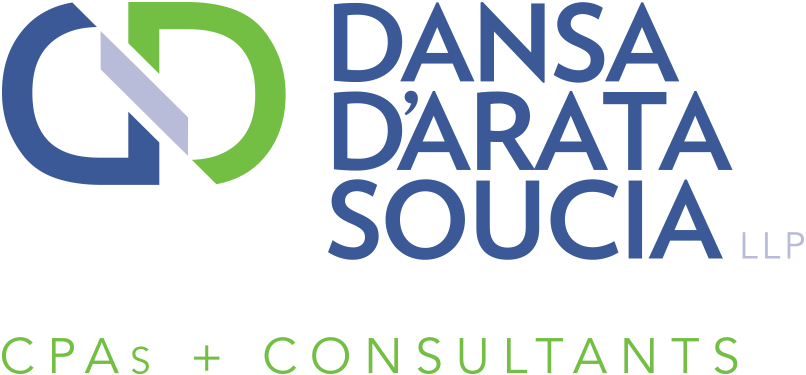The TCJA temporarily expands bonus depreciation
 The Tax Cuts and Jobs Act (TCJA) enhances some tax breaks for businesses while reducing or eliminating others. One break it enhances — temporarily — is bonus depreciation. While most TCJA provisions go into effect for the 2018 tax year, you might be able to benefit from the bonus depreciation enhancements when you file your 2017 tax return.
The Tax Cuts and Jobs Act (TCJA) enhances some tax breaks for businesses while reducing or eliminating others. One break it enhances — temporarily — is bonus depreciation. While most TCJA provisions go into effect for the 2018 tax year, you might be able to benefit from the bonus depreciation enhancements when you file your 2017 tax return.
Pre-TCJA bonus depreciation
Under pre-TCJA law, for qualified new assets that your business placed in service in 2017, you can claim a 50% first-year bonus depreciation deduction. Used assets don’t qualify. This tax break is available for the cost of new computer systems, purchased software, vehicles, machinery, equipment, office furniture, etc.
In addition, 50% bonus depreciation can be claimed for qualified improvement property, which means any qualified improvement to the interior portion of a nonresidential building if the improvement is placed in service after the date the building is placed in service. But qualified improvement costs don’t include expenditures for the enlargement of a building, an elevator or escalator, or the internal structural framework of a building.
TCJA expansion
The TCJA significantly expands bonus depreciation: For qualified property placed in service between September 28, 2017, and December 31, 2022 (or by December 31, 2023, for certain property with longer production periods), the first-year bonus depreciation percentage increases to 100%. In addition, the 100% deduction is allowed for not just new but also used qualifying property.
The new law also allows 100% bonus depreciation for qualified film, television and live theatrical productions placed in service on or after September 28, 2017. Productions are considered placed in service at the time of the initial release, broadcast or live commercial performance.
Beginning in 2023, bonus depreciation is scheduled to be reduced 20 percentage points each year. So, for example, it would be 80% for property placed in service in 2023, 60% in 2024, etc., until it would be fully eliminated in 2027.
For certain property with longer production periods, the reductions are delayed by one year. For example, 80% bonus depreciation would apply to long-production-period property placed in service in 2024.
Bonus depreciation is only one of the business tax breaks that have changed under the TCJA. Contact us for more information on this and other changes that will impact your business.
© 2018


 As a business owner, you know that it’s easy to spend nearly every working hour on the multitude of day-to-day tasks and crises that never seem to end. It’s essential to your company’s survival, however, to find time for strategic planning.
As a business owner, you know that it’s easy to spend nearly every working hour on the multitude of day-to-day tasks and crises that never seem to end. It’s essential to your company’s survival, however, to find time for strategic planning. On December 20, Congress completed passage of the largest federal tax reform law in more than 30 years. Commonly called the “Tax Cuts and Jobs Act” (TCJA), the new law means substantial changes for individual taxpayers.
On December 20, Congress completed passage of the largest federal tax reform law in more than 30 years. Commonly called the “Tax Cuts and Jobs Act” (TCJA), the new law means substantial changes for individual taxpayers. There’s an old saying regarding family-owned businesses: “Shirtsleeves to shirtsleeves in three generations.” It means the first-generation owner started in shirtsleeves and built the company up from nothing but, by the third generation, the would-be owner is back in shirtsleeves with nothing because the business failed or was sold.
There’s an old saying regarding family-owned businesses: “Shirtsleeves to shirtsleeves in three generations.” It means the first-generation owner started in shirtsleeves and built the company up from nothing but, by the third generation, the would-be owner is back in shirtsleeves with nothing because the business failed or was sold. Retirement plan contribution limits are indexed for inflation, but with inflation remaining low, most of the limits remain unchanged for 2018. But one piece of good news for taxpayers who’re already maxing out their contributions is that the 401(k) limit has gone up by $500. The only other limit that has increased from the 2017 level is for contributions to defined contribution plans, which has gone up by $1,000.
Retirement plan contribution limits are indexed for inflation, but with inflation remaining low, most of the limits remain unchanged for 2018. But one piece of good news for taxpayers who’re already maxing out their contributions is that the 401(k) limit has gone up by $500. The only other limit that has increased from the 2017 level is for contributions to defined contribution plans, which has gone up by $1,000. Many people scoff at New Year’s resolutions. It’s no mystery why — these self-directed promises to visit the gym regularly or read a book a month tend to quickly fade once the unavoidable busyness of life sets in.
Many people scoff at New Year’s resolutions. It’s no mystery why — these self-directed promises to visit the gym regularly or read a book a month tend to quickly fade once the unavoidable busyness of life sets in.
 The House and Senate have each now passed their own versions of tax reform, and even though there is still ongoing negotiation between the two before one final bill is submitted to the president, there is one provision that both bills have in them currently that looks likely to become law.
The House and Senate have each now passed their own versions of tax reform, and even though there is still ongoing negotiation between the two before one final bill is submitted to the president, there is one provision that both bills have in them currently that looks likely to become law. The artificial intelligence (AI) revolution isn’t coming — it’s here. While AI’s potential for your company might not seem immediately obvious, this technology is capable of helping businesses of all shapes and sizes “get smart.”
The artificial intelligence (AI) revolution isn’t coming — it’s here. While AI’s potential for your company might not seem immediately obvious, this technology is capable of helping businesses of all shapes and sizes “get smart.”